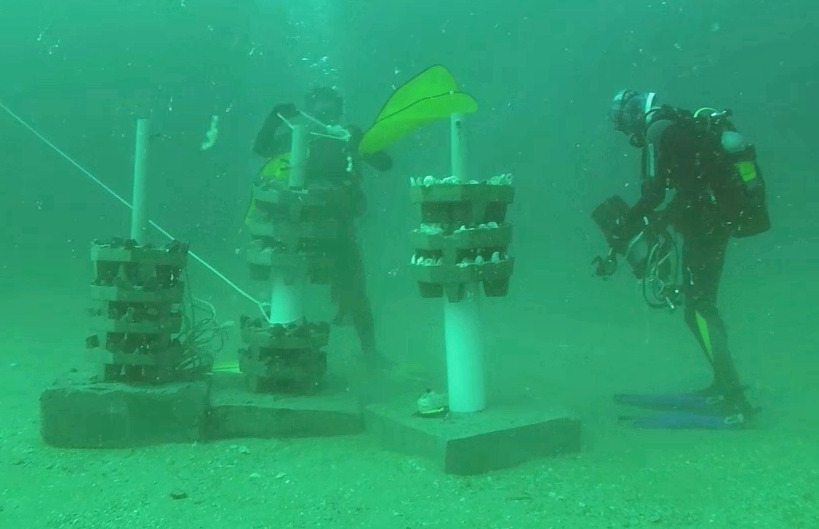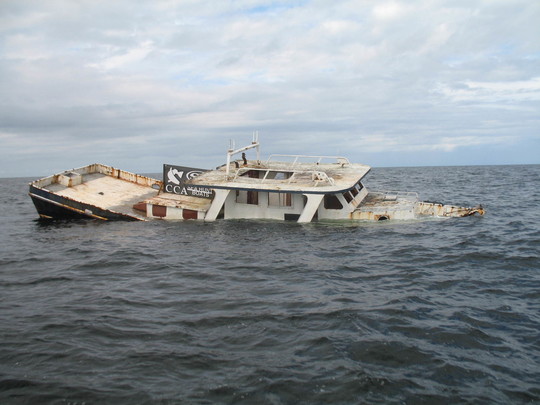A 65-foot trawler and experimental concrete structures are among the most recent additions to South Carolina’s artificial reef system. Funded in part by CCA SC and Sea Hunt Boats, this trawler was recently added to the C.J. Davidson Jr. Reef off the coast of Georgetown. (Photo: SCDNR)
At the C.J. Davidson Jr. Reef (PA-16) off the coast of Georgetown, South Carolina Department of Natural Resources (SCDNR) staff recently deployed the retired trawler, where it joins a large barge and 20 Army vehicles in approximately 50 feet of water. This is the latest reef project funded in part by Sea Hunt Boat Company and Coastal Conservation Association South Carolina (CCA SC), which has provided support for 14 reef projects to date.
Biologists also constructed and sunk a number of new concrete designs at the popular Charleston 60’ Reef (PA-24). Using octagonal structures originally developed for erosion control, biologists constructed eight towers of various heights and configurations to provide fish habitat on the seafloor.
“These have not been used specifically as fish habitat before,” said Robert Martore, who leads the agency’s artificial reef program. “We will monitor the structures, and if they attract and hold significant numbers of fishes, we will construct more and distribute them along the coast.”
Artificial reefs play a similar role in the ocean as coral reefs, which cannot grow in the temperate waters off the coast of South Carolina. These human-built structures are typically placed on areas of seafloor with little natural relief, improving habitat and spawning grounds for a diverse array of fish and marine life – and in turn attracting recreational divers and anglers.

SCDNR divers inspect recently sunk concrete structures. (Photo: SCDNR)
SCDNR biologists have been constructing artificial reefs to improve offshore fish populations and fishing opportunities for over forty years, sinking everything from bridge spans to military vehicles to subway cars. The environmental benefits of artificial reefs are twofold, as they recycle materials that would otherwise be destined for landfills in addition to expanding critical habitat for offshore fish. Structures intended for artificial reefs undergo a long and rigorous cleaning process to ensure they’re safe to sink. On average, it takes about six months after being sunk for reef structures to be colonized by marine organisms and become functional fish habitat.
Boaters, anglers and divers can download the coordinates of South Carolina’s artificial reef sites for their GPS units here.


















